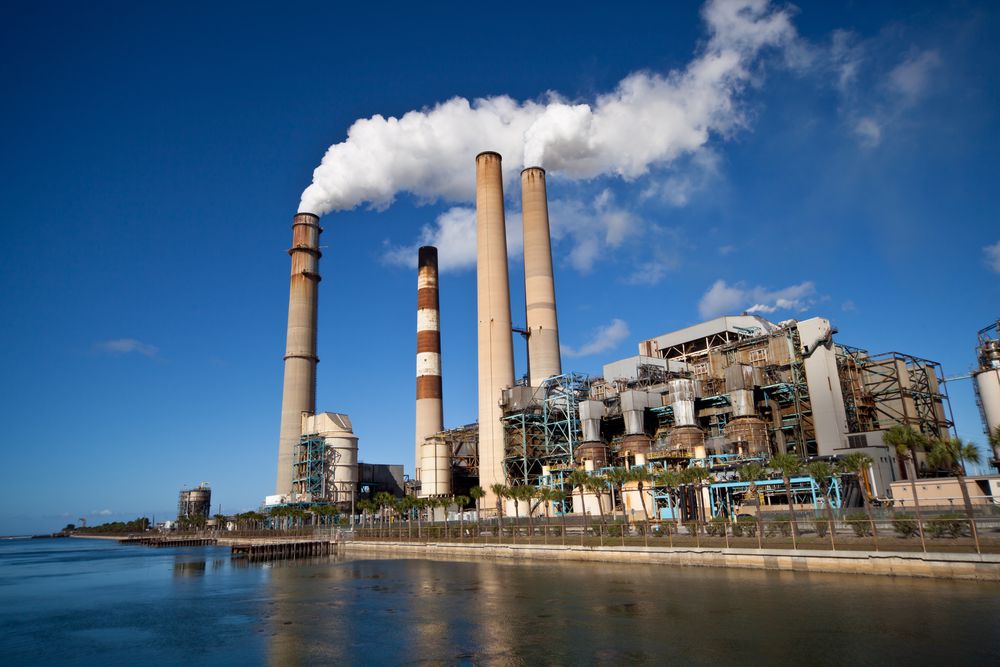Flue gas contains many toxic chemicals, including carbon dioxide, carbon monoxide, soot particles and many others. In household environments, carbon monoxide is the biggest threat — it’s odourless, colourless and can kill people quickly. In industrial environments, carbon dioxide and other emissions are a larger concern. They damage the planet, and corporations have a larger capacity for environmental damage than households.
In both settings, flue gas must be analysed in order to maintain safety and efficiency of appliances. Temperature and flow rate are two of the most important qualities in question.
By analysing the temperature of the emissions, technicians can discover dangerous amounts of certain chemicals. High temperatures indicate unsafe levels of carbon dioxide, carbon monoxide and other hazards. Measuring flue gas flow rate is another way of determining the safety of appliances in both industrial and residential settings.
How to calculate flue gas flow rate
There are a few different types of flow measurement.
First, a technician can determine flow rate by calculating the gas velocity. This is a measurement of the distance that the gas travels per unit of time.
A technician can also calculate flue gas flow rate by determining the volume flow rate of the emissions. This is a similar concept to velocity, with one key difference. Volume flow rate is calculated by determining the amount of gas that can travel a certain distance over a unit of time.
Velocity measures speed and direction, whereas volume flow rate is a calculation of the amount of combustion released in a certain period of time.
These measurements can be taken by placing a pitot tube in a ventilation duct. The pitot tube has two holes — one that measures stagnation pressure and another that measures static pressure. By determining the differential pressure, technicians can calculate the flue gas flow rate and thereby determine the safety and efficiency of the combustion.
The continuous measurement of flue gas flow rate can inform both homeowners and plant operators about the flow profile of their machinery, which is important not only for the safety of those on the premises, but also the wellbeing of the planet.
The importance of measuring flue gas flow rate
The more quickly appliances release emissions, the more goes into the atmosphere. Since flue gas contains many harmful chemicals, maintaining updated knowledge of the magnitude at which gases are produced is essential for both human and environmental safety.
Industrial testing
Large organisations like factories or power plants often produce a significant amount of of emissions. These emissions, namely carbon dioxide, are harmful to the environment and lead to global warming.
Therefore, it’s important that stack gas testing is conducted to ensure that the flue gas flow rate of facilities operated by large corporations does not exceed acceptable levels. Both a high volume and a high velocity of gas flow lead to more carbon emissions entering the atmosphere and damaging the ozone layer, leading to increased temperatures throughout the world.
Small-scale testing
Households and small businesses do not face much risk in terms of damaging the environment, however, they must address increased health risks from an unsafe amount of gas emissions.
For example, carbon monoxide poisoning is a significant risk in contained environments. It is undetectable without equipment, and it can cause serious health effects such as flu-like symptoms, impaired vision, dizziness and chest pain. High enough levels can lead to carbon monoxide poisoning, which is potentially fatal.
Carbon monoxide is not the only dangerous chemical present in flue gas. Appliances can produce soot, which, emitted in significant amounts, can cause respiratory damage and even cancer. Additionally, unsafe amounts of nitrogen can cause unconsciousness or even death by asphyxiation.
Testo’s solutions
Consistent flue gas flow rate measurement is important to assure safety, efficiency and environmental responsibility. That’s why flow measurement technology should be smart, fast and intuitive.
Testo’s flue gas analysis tools measure gas flow rate as well as temperature, giving technicians a well-rounded understanding of the safety and efficiency of the appliances in question. Plus, we carry a variety of products for professionals and consumers alike, all ranging in usability and advanced features.
The testo 310 is our easiest flue gas analysis tool. It’s user-friendly and easy to operate, and it can conduct all basic measurements on heating systems. The testo 300 is a little more technologically advanced, with capabilities to take a wider range of measurements. It also comes with smart-touch operation and internet compatibility, so professionals can quickly and easily compile and email important data. For those looking towards the future, the testo 330i is one of our Bluetooth-capable products, and it can be operated from the convenience of a smartphone through the testo Smart App.
Testo’s flue gas analysis tools measure many properties of flue gas emissions, including temperature and flow rate. Both of those qualities can help technicians determine the amount of harmful gases emitted, like carbon dioxide and carbon monoxide. Measuring the emissions of industrial and household appliances is the first step in making environments safer.
For flue gas flow rate measurement specifically, we offer a range of flow meters, which calculate flow measurements in ducts, outlets and filters. Deciding on a flow meter depends on the user’s level of expertise and comfort level with advanced technology, as well as whether the product will be used in an industrial or small-scale environment. We have a flow meter for every scenario and technician.
Testo provides solutions for a wide range of environments and professionals. Our cutting-edge technologies are paving the way to the future, and we are making flue gas flow rate measurement and other types of analysis faster and more efficient for everyone.
To learn more about our flue gas flow rate measurement technology, contact us today.









 Reduce cooking oil costs while ensuring quality
Reduce cooking oil costs while ensuring quality Expert knowledge on CO2 monitoring
Expert knowledge on CO2 monitoring Refrigeration knowledge - in 3 modules
Refrigeration knowledge - in 3 modules



